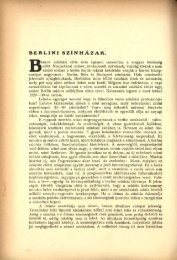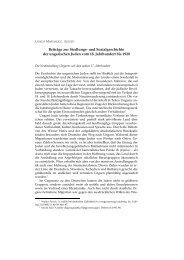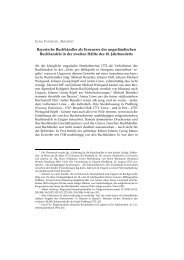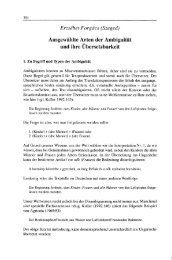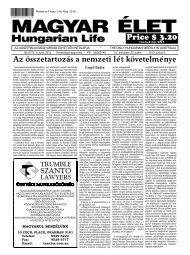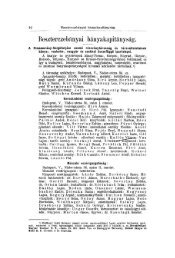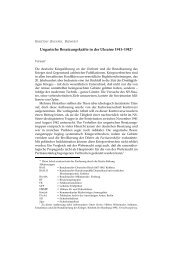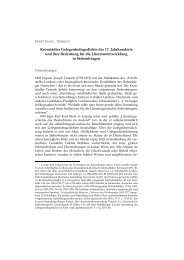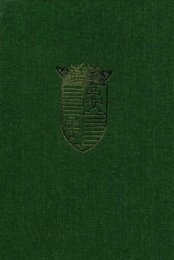hungarian studies - EPA - Országos Széchényi Könyvtár
hungarian studies - EPA - Országos Széchényi Könyvtár
hungarian studies - EPA - Országos Széchényi Könyvtár
Create successful ePaper yourself
Turn your PDF publications into a flip-book with our unique Google optimized e-Paper software.
SOME QUESTIONS ON HUNGARIAN-SOVIET RELATIONS 9<br />
cosmopolitanism. Rákosi alluded to the recent arrest of the secret police's Jewish<br />
leader Gábor Péter, whom he accused of having worked with Nazi and Zionist<br />
police informers, and promised to "investigate" whether Zionists had infiltrated<br />
the party. Of this infiltration, Rákosi seemed to be convinced. He called for increased<br />
vigilance in view of the fact that the president of the Israelite religious<br />
community in Budapest had "turned out" to be a former "spy for the Gestapo".<br />
The drive against the Zionists would not be anti-Semitism. "Good" Jews, who<br />
supported the people's democracies, would not be persecuted. The allusion to<br />
Zionism as a center for American spying was by no means a coincidence. Although<br />
the trial was never staged because Stalin suddenly died, the preparations<br />
for a large anti-Semitic campaign had begun in the Fall of 1952. The Hungarian<br />
authorities had prepared various scenarios, all of which followed the pattern set<br />
by the Slansky trial in 1952. 44 According to Slansky's confession, American and<br />
Israeli leaders had agreed at a secret conference in 1947 that the Zionist organizations<br />
in Eastern Europe would be the center of anti-Communist espionage and<br />
subversion. In return the United States would support Israel. That is, Zionist agents<br />
had wormed their way into the higher echelons of Hungarian political life, the<br />
economy, and the state security organs. All of them had previously served the<br />
Gestapo. According to the preliminary hypothesis, Jewish conspirators could be<br />
found in the political police, in the Jewish religious organizations, and in important<br />
economic positions. They received their instructions from the World Jewish<br />
Congress and Joint and passed on intelligence to the United States secret service.<br />
Zionist engineers were sabotaging production; and Zionist doctors were standing<br />
ready to murder party and state leaders.<br />
The first phase in the preparation for the "trial of trials" was the arrest of the<br />
leader and other high ranking officers of the AVH, or political police. Even though<br />
the ÁVH men had themselves been working on unmasking a Zionist conspiracy,<br />
they now found themselves accused of being Zionists themselves. On January 6,<br />
1953, three days after Gábor Peter's arrest, Ernő Gerő, Mihály Farkas and Béla<br />
Vég instructed the ÁVH to pursue the matter along the following lines: Yugoslavia,<br />
American spying, the Horthy police and the Zionists. One doctor, a colonel of<br />
the ÁVH who was arrested, found himself accused among other things of several<br />
murders and of deliberately maltreating senior comrades. Some eighty to ninety<br />
people were detained, including Lajos Stöckler, the president of the National Representation<br />
of Hungarian Israelites. The great show trial never took place. The<br />
charges of Zionist conspiracy were dropped in the summer of 1953, and with the<br />
help of Soviet experts a new party line was initiated. Many of the suspects were let<br />
go. Gábor Péter and "his gang" stood trial for economic crimes, such as selling<br />
passports to rich people who wanted to leave the country. These charges were<br />
well-grounded. Their arrest provided a great opportunity for the HWP leaders to<br />
accuse Péter of "misleading" them about Rajk and the other communist victims



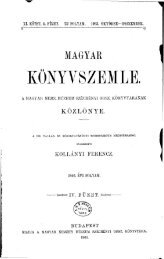
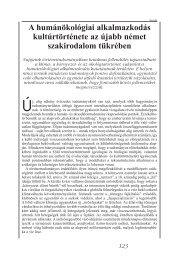
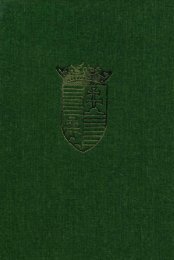
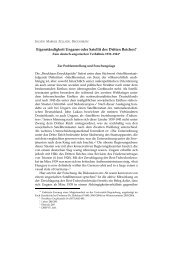
![Letöltés egy fájlban [36.8 MB - PDF] - EPA](https://img.yumpu.com/23369116/1/172x260/letoltes-egy-fajlban-368-mb-pdf-epa.jpg?quality=85)
